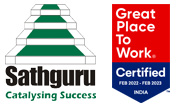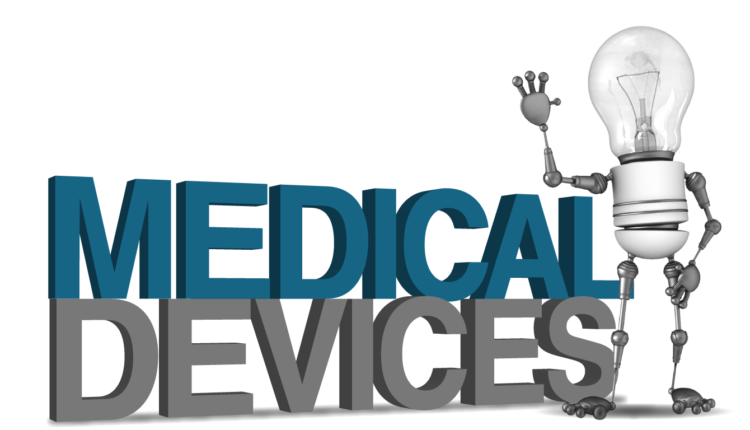Looking at the speed at which India is taking long strides in the healthcare landscape at large, one derives a great sense of satisfaction that the nation is benefitting from factors like medical devices and modern technology, writes Mukul Kumar Mishra of Elets News Network (ENN).
The Indian healthcare sector is on the cusp of transformation due to a range of factors including technological advancements and high demand of quality and cost-effective medical facilities.
There is a belief that the quality of any healthcare delivery system depends upon three Ds — Doctors, Drugs and Devices. All three are utmost important and needed to achieve the aim of providing healthcare to all.
Neeraj Lal, Vice President and Cluster Head — Bangalore and Karnataka Region, Rainbow Children’s Hospitals says, “Medical technology is an integral part of the entire healthcare. For decades now with advancement of technology and increasing sophistication of medical devices, the industry has played a major role in bringing down the incidence of disease and improving the overall healthcare system across the globe.”
“Medical devices” encompass any instrument, apparatus and appliance which are used for the diagnosis, prevention, monitoring, and treatment of any disease or malfunction within the body. The medical devices are the sunshine segment of the healthcare ecosystem which makes whole process of diagnosis quick, accurate and an easy task.
“Medical technology has evolved by leaps and bounds providing a right thrust to surgical processes and treatment procedures. With new advanced technologies, doctors and surgeons can be more accurate, right from early diagnosis to attaining desired outcomes during procedures and surgeries,” says Madan Krishnan, Managing Director, India Medtronic, a company which deals in medical technology solutions.
Diagnostic equipment is used in medical imaging, a process of creating visual representations of the interior of a body for clinical analysis. Medical imaging is being done with the purpose to reveal internal structures which ultimately help doctors to examine and diagnose the medical condition of a patient.
“Connected care, digitisation, miniaturisation and indigenous innovation in medical technologies are trends that have potential to push boundaries of healthcare delivery in India. Digitisation and connected care are creating possibilities of more efficient management of ICUs and healthcare outcomes in private hospitals,” said Pushpa Vijayaraghavan, Director, Sathguru Management Consultants.
“Today, medical devices can provide enhanced patient care in remote areas through telemedicine and teleradiology. Advanced equipment technologies such as artificial intelligence and robotics provide higher levels of precision thus increasing the success rate and improving overall quality of care,” Lal said.
“Technologies such as virtual reality and augmented reality can also be used to simulate real time healthcare environment to provide training to physicians, technicians, and doctors thus eliminating the need for presence of actual equipment for training purposes,” he added.
As India’s population is on the rise, the country needs a very efficient imaging technology to screen and diagnose patients. Not only that, the growing non-communicable disease among citizens of urban cities is another challenge which makes healthcare providers think about catering people with high-tech medical devices.
Non-Communicable Diseases (NCDs), such as cancer account for 60 per cent of all deaths in India. The data presents an alarming picture revealing that 68 per cent of cancer patients in India die before five years of diagnosis. In addition, changing lifestyle and food habits also make people vulnerable to NonCommunicable Diseases (NCDs), which are typically treated or ameliorated with medical devices.
“Healthcare providers are now focusing on patient care and enhancing clinical outcomes by adopting state of the art digital technology and advanced medical processes. Embracing and adopting technical advancements at an equipment and procedural level can help elevate clinical outcomes like never before while making it effective, affordable and accessible,” said Dr Dilpreet Brar, Founder, CEO & MD, medECUBE Healthcare. According to him, some recent developments in the field of medical science with respect to equipment and technologies specific to radiology are:
- New probes (radiopharmaceuticals) are becoming available to diagnose cancer, Alzheimer’s etc.
- Molecular imaging can be used to make targetted cancer therapies more effective
- GE and Siemens recently launched their next generation CT machines for Cardiac applications
Siemens launched Magnetom Vida MRI at RSNA in Chicago in November 2017. This MRI can adapt to anatomical and physiological characteristics of patients Dr Vivek Chail from icliniq.com says, there are many developments taking place in the area of patient outreach and delivery of healthcare. “ There is AI assisted robotic surgery which is helping many patients and doctors perform precision surgeries and reducing the risks involved, with better outcomes. In artificial Intelligence-assisted robotic surgery, an experienced surgeon controls a robotic device and surgery is performed with greater precision and accuracy. This is a benefit in critical areas of medicine like brain and spine surgery where a high degree of accuracy is needed,” he added.
Growth
Diagnostic equipment market comprises of organisations which are involved in the manufacturing and marketing of equipment such as computed tomography (CT) scanners, magnetic resonance imaging systems (MRI), X-rays, nuclear imaging (SPECT/PET), mammography devices, cardiovascular monitoring and diagnostic devices, ultrasound devices, and accessories.
Digitisation and the proliferation of IoT-enabled devices present a great opportunity for growth in India. According to the Government’s Make In India website, the medical devices industry in India is presently valued at $ 5.2 billion and contributes 4-5 per cent to the $ 96.7 billion Indian health care industry. Currently, India has about 750–800 medical device manufacturers in the country, with an average investment of Rs 170–200 million and an average turnover of Rs 450–500 million.
According to industry estimates, the medical devices market will grow to $50 billion by 2025. At present, India is counted among the top 20 global medical devices market and is the fourth largest medical devices market in Asia after Japan, China and South Korea.
The growth of medical device market is attributed to many factors including burgeoning middle class, improved healthcare infrastructure, increased healthcare spending, etc. In addition, the Government’s initiatives like bringing 100 per cent FDI, Make in India concept and building medical device parks, etc, have also given push to this industry.
Challenges
Despite huge potential due to high demand of quality diagnostics services, the Indian medical device market faces several challenges. Foremost among them is country’s reliability on imported devices for addressing domestic demand.
More than 70 per cent of medical equipment sold in the country are is imported. In addition, lack of compliance standards and coherent policy framework are also jeopardising growth of Indian device industry. Through Make in India concept and Medical Devices Rules 2017, the Government has tried to boost domestic manufacturing market; nonetheless these steps are not sufficient to do away all the obstacles of the domestic market.
Experts believe that in India, pseudo manufacturing flourishes as manufacturers are turning into importers for their brands. Other countries like US, China encourage domestic players to make indigenous products. Domestic players demand the Government should increase the basic customs duty on medical devices in the range of 5-15 per cent to promote domestic manufacturing.
India needs to implement ‘Make in India’ in its true sense and for that a framework of policies along with strategic roadmap is need of the hour.
“While medical technologies can redefine possibilities and push boundaries, impact on outcomes entirely depends on widespread adoption by public and private stakeholders in healthcare delivery. Majority of the impressive devices indigenously developed are lurking on the sidelines for lack of market maturity and adoption pathways,” says Pushpa Vijayaraghavan, Director, Sathguru Management Consultants.
Source: ehealth


